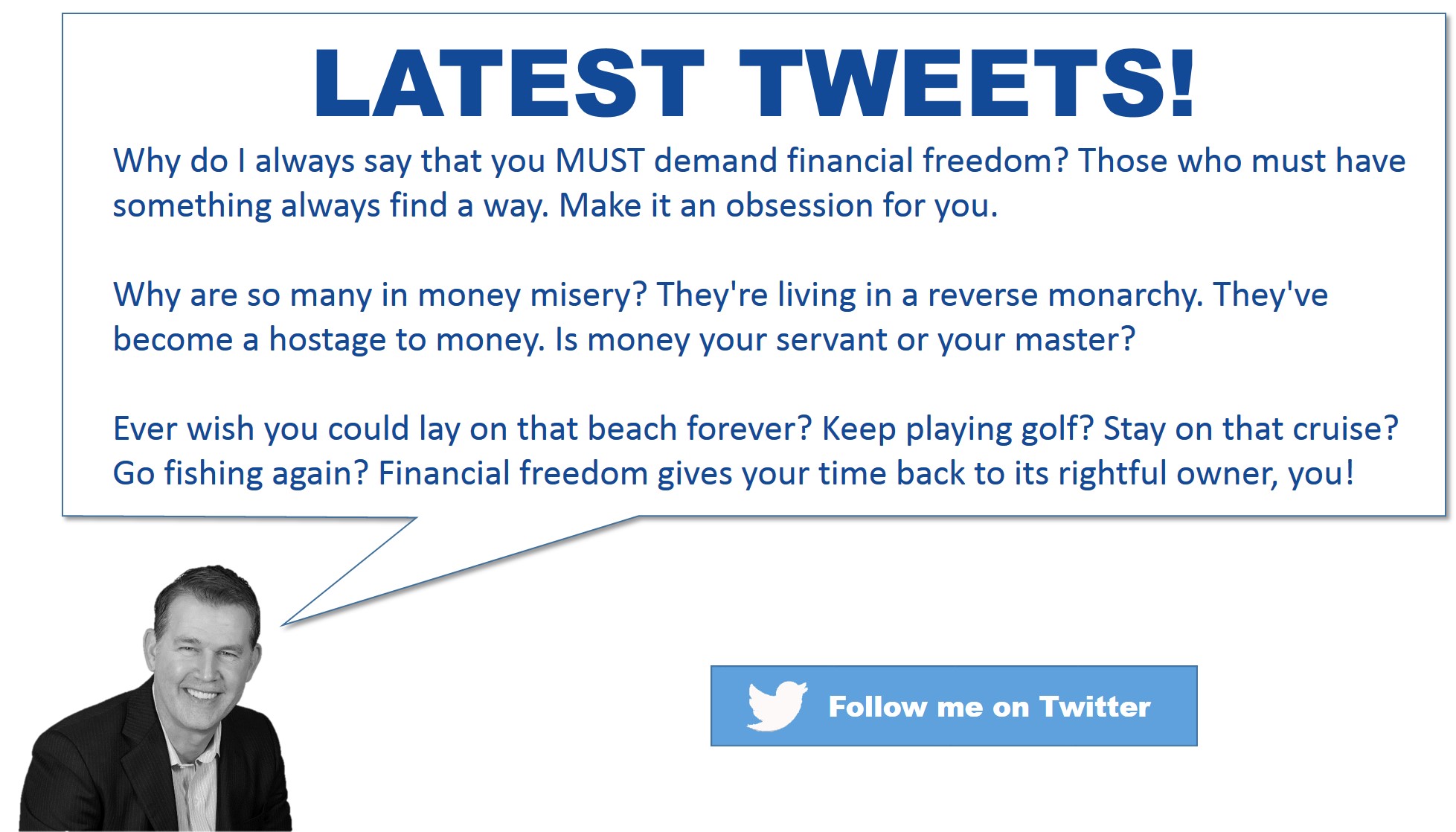If you’re not familiar with value investing, it’s the bottoms-up style of investing used by many of the world’s greatest investors and the very investing method used by the greatest investor of all time – Warren Buffett. In short, the value investor looks to buy shares in quality companies that are selling below their intrinsic value, usually due to some adverse situation that has driven the stock price down. The idea is that, over time, the stock’s market price will converge with its intrinsic value as the company addresses the situation that created the decline in market price, economies improve and as investors forget and move on to something else.
Value investing is what made yours truly rich. I became a student of this style and used it to build wealth in the stock market. Its focus on the business fundamentals made sense to me and my investment philosophy. Value investing works, but there’s something every investor needs to know about value investing….it has a dark side.
Yep. There’s a part of it that, if you’re not careful, it will suck you in, chew you up and spit you out like a child does with cough syrup.
What’s this evil in value investing that can rob you of your money? Value traps.
A value trap is a stock that appears to be cheap because the stock has been trading below its intrinsic value for an extended time period. Such a stock attracts value investors who are looking for a bargain because they seem inexpensive. The trap springs when investors buy into the company at low prices and then the stock continues to languish permanently, locking the investor into owning shares of a poor quality company. What was once thought to be a temporary impairment to the company, is now seen as mortal wounds that will make it near impossible for the investor to ever recover their invested sums. As an analogy, a value trap is like trying to catch a falling knife.
In today’s essay, I want to do something a little different. To explain value traps, I’m going to provide a real world example of how this situation occurs. This example involves a very well-known and successful value investor, who I’ll mention in just a minute.
But before I do, a disclaimer: By mentioning this investor, I want you to know that I am not trying to criticize him. Nor am I trying to disparage his skills as an investor. This person has a long track record of investing success that is well deserved. He’s also a philanthropist that has given graciously to many worthwhile causes.
What I want you to know is that investing, just like everything else, is a learning experience. You are going to make mistakes. Everyone does. And that’s the point – if a very well-known, and previously successful, value investor can make mistakes, so can you my dear reader. So can you.
As an extra twist in this essay, I’m going to provide you with my commentary as to why I didn’t make this very same investment. That’s right. At the time, I looked long and hard at this investment opportunity but ultimately declined to invest in it. Does that make me a genius? Hardly. I’ve made my share of mistakes.
The reason I provide my thoughts on this investment is not to make me look smart. Rather, it’s in the hopes that you’ll find this narrative instructive on your journey as a value investor.
Let’s jump in…
The Investor
The well-known value investor that I’m referring to is Bruce Berkowitz. Berkowitz is an American equity fund manager and registered investment adviser. He founded Fairholme Capital Management in 1997 and was formerly a senior portfolio manager at Lehman Brothers Holdings and a managing director of Smith Barney. Berkowitz was named 2009 Domestic-Stock Fund Manager of the Year and Domestic-Stock Fund Manager of the Decade by Morningstar for his incredible track record at Fairholme. As of late, Fairholme’s funds under management has fallen, but at their height (in 2011), the fund’s investments were $20 billion.
The Investment
Fairholme owned shares in Sears (the well-known department store, appliance and tool maker) for many years, having first invested in the company in 2005. By 2017, Fairholme was Sears’ second largest shareholder and Berkowitz was serving on the Sears board. Despite massive underperformance by the company (sales are down 45% since early 2013, its debt load has spiked to over $4 billion, and the company is losing well over $1 billion annually), Berkowitz was one of its fiercest defenders over the years. That is, until earlier this year when the company started liquidating its position in the troubled retailer. Between 2007 and 2018, Sears’ share price fell from $144 to $2.55, generating a considerable loss to Fairholme’s investors.
So What Went Wrong?
Berkowitz’s main thesis on the stock was that the underlying assets such as the popular brand names of Kenmore and Craftsman, as well as the sizeable amount of company-owned real estate sitting underneath all those Sears locations, was worth billions. His assertion was that the company’s operating losses, due to competition from online retailers and changing consumer tastes, would be offset significantly by the selling, or optimization, of these assets. It’s the “sum of the parts is greater than the whole” idea. Unfortunately, it didn’t work out that way.
My Commentary
I looked into this investment with heightened interest. The idea that Sears owned much of the land that sits underneath its stores (and that it was potentially being overlooked by the market) was very appealing to me. Sears had purchased this land decades ago, so much of it was probably understated on their books. And some of it was located at premium places and intersections around the country. This land was potentially worth billions, possibly making this a classic value investment I thought.
So, why didn’t I invest? Why did I skip it?
For two reasons…
First, real estate can be a fickle beast. They say that there’s a buyer for every property and that’s probably true. But what is also true is that you don’t know when that very buyer will show up! The land that Sears owned was indeed at some choice locations, but it was also big. Huge. What I saw happening in retail was just the opposite – companies were going small, by moving online and reducing their store’s physical footprints to be more competitive. Store closings and downsizing has been the trend, so who would buy properties so big, I wondered? Even if the buyer could make a case of buying the property and dividing it up, he/she would have to demolish the Sears building and then sell the lots one-by-one or turn it into a shopping center (again not the trend). This option takes a lot of time and patience, something potential buyers apparently didn’t have. The company did sell some of its namesake brands and some of its real estate, but the long line of investors ready to snap-up its real estate at premium prices never materialized.
Which brings me to reason number two…
What’s the worst time to sell something? You guessed it, when you have to. Whether a person is selling their son’s go-cart or their house, desperation works against the seller. That’s because the buyer senses blood in the water and therefore has the ultimate advantage – he or she can just wait. I don’t know this for a fact, but I always believed that those with the means to buy Sears’ real estate knew the company was in financial trouble and just waited. It didn’t take a rocket surgeon to see that if you just waited long enough, Sears’ operating losses from its failing retail business would consume it, putting the company on its heels financially. Just as you don’t sell a Van Gogh at a fire sale, you don’t get premium prices for selling real estate when you’re forced to sell it.
For these two reasons, I saw Sears as a value trap and decided not to invest. Indeed there were assets, assets that the market was perhaps overlooking, but I felt that those assets would never see the light of day due to an operating business that would smother the life out of them. And that’s indeed what happened.
Lessons To Be Learned
You’ve seen the signs “I buy ugly houses”, right? Value investing is a lot like that. Value investors are buying ugly stocks and waiting for them to turn pretty again. However, some stocks are ugly not for temporary reasons, but for reasons that have caused permanent impairment to their value, such as changing consumer tastes, competitor innovation and obsolescence.
Ask yourself if the company you’re looking to invest in is suffering from a temporary issue or something that looks more permanent? Use your common sense here. As Buffett has said many times, investing is not a game whereby the guy with an IQ of 160 beats the guy with an IQ of 130. Common sense would dictate that Sears retail business had been in a tailspin for decades and most likely would never recover. A falling knife.
Assets such as a large amount of cash or real estate on the books can look attractive to value investors, but again, use common sense. Ask yourself how can the company realistically exploit those assets, and more importantly, what will do they do when they are exploited? Let’s say Sears was able to sell their real estate at premium prices. Would that have meant that the cash would have been given to shareholders? Probably not. My guess is that Sears would have plowed it back into the losing retail operations or into some other failed investment.
Strong companies can overcome many obstacles, including large ones. But companies, just like individuals, that are already back on their financial heels rarely recover. Capitalism, just like the lions in Africa, is brutally efficient. Weaknesses get exploited and even clever ideas, such as selling underlying assets, sometimes never see the light of day as the company uses-up it’s runway before it can execute on those plans. Does the company have enough runway to recover? Are they operating from a position of strength or weakness as they try to make their way thru the quagmire? Have they stumbled or has the train left them? These are all good questions to consider in your value analysis.
One of the most difficult — and most important — aspects of value investing is determining whether a “cheap” stock is a value play … or a value trap. Take your time. Do your homework. Suck your thumb. Use your common sense. Remember another Buffett axiom – Investing is not a game of called strikes. You can sit there with the bat on your shoulder for as long as you want. Sometimes the best thing to do in investing is to do nothing and save your money.
Be free. Nothing else is worth it.
P.S. Are you missing out on what tens of thousands are getting in their mailbox? Sign up on my email list and there will be lots of extra stuff about building wealth that you will receive in the future if you do!
P.S.S. Looking to make an overnight fortune? Don’t sign-up to receive my newsletter below. There’s no magic secret. Becoming financially free takes time and dedication. But learning professional-grade money skills can have a life changing effect. If you’re ready to put in the work and learn, I can show you how to achieve financial freedom. There’s nothing for sale on this blog or in the newsletter. I just provide actionable advice for free as my way to give back. What do you have to lose? Subscribe today.
Ready for more tips on how to achieve the free life? Check-out more articles from the blog archives below:
Just Quit Already. Five Anti-Resolutions You Should Make Now For Financial Success In 2018!
Theranos Case Study: Why I Never Invest In Startups (And Why You Should Never Start)
Greek Tragedy: Important Personal Finance Lessons To Be Learned From The Greek Debt Crisis








